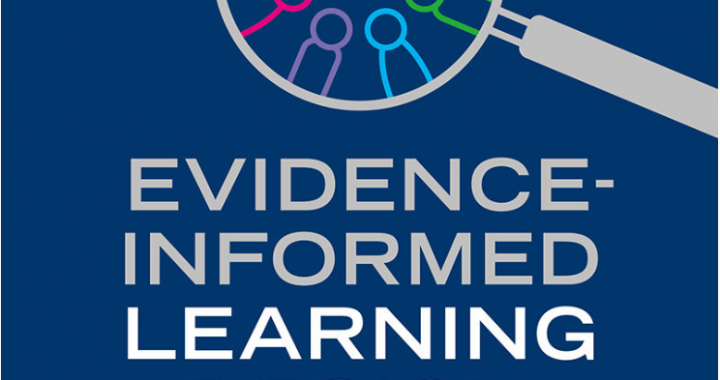This book review is on Evidence-Informed Learning Design: Creating training to improve performance by Mirjam Neelen and Paul A Kirschner (2020) and according to the authors, its purpose is “to help learning professionals at any stage in their careers to focus on the right things, so that they can build a strong knowledge foundation, based on scientific evidence…”. Of course, the mention of the “right things” intrigued me, so I took a shot at reading and reviewing this book.
A few disclaimers
Apart from my aforementioned interest in this book, I think the combination of expertise between the authors i.e. Kirschner being an academic researcher and Neelen from the Learning and Development (L&D) side, is definitely something we need more of in the industry. I consider myself an independent researcher, I have no relationship with the authors and this review is a objective, neutral account of the value of this book for L&D. Also, I don’t usually read L&D books because most tend to lack substantial research to back their claims. You can find me digging into academic, applied research and peer-reviewed papers most of the time. This book does a good job of providing significant research aligned to its concepts. Let’s take a look at some of the highlights of why you should read it.
Part I – Building the foundation: Evidence-informed learning experiences
In Part I, two chapters offer a clear distinction between evidence-based vs evidence-informed approaches is made. They also explain what they consider to be the learning sciences according to research and their concept of two ‘holy’ trinities. Lastly, a recap of learning theories and great advice to the reader on how to discern good research from unfounded anecdotal accounts.
Part II – Eyes wide open: A plea for improvement
In Part II, two more chapters explain why terms like “learner” to refer to workers in an L&D context and “learning experience design” are preferred. More detailed guidance as to how to appreciate research is provided, the purpose and differences of training and performance support are covered as well.
Part III Facing fallacies and myths
This is one of the best parts of the book as it confronts the reader with several myths and misinterpreted notions that plague the world of L&D and are quite apparent on daily LinkedIn posts i.e. learning styles, assumptions of neuroscience’s link to learning and logical fallacies.
Part IV Find Focus
Part IV focuses on the second trinity concept concocted by the authors which deals with tools, techniques and ingredients. The essence of discussion here is surrounding complex skills and the research of J. J. van Merriënboer which goes back to the 90s and the creation of the 4C/ID model.
Part V The learner in the driver’s seat
Part V of this book offers a good, detailed dive into Self-Directed Learning and Self-Regulated Learning. These concepts are ideals that should be promoted in every enterprise learning culture. The book concludes with practices that should be stopped and recommendations on what learning professionals should start doing.
Research concerns
Although, this book does a good job confronting the reader with some of the realities encountered in practice; there are several concerns regarding the research selection and inconsistencies found within.
Concern 1: No sign of Merrill’s Theories, Concepts or Principles
David M. Merrill is a prolific learning scientist, researcher and author of the First Principles of Instruction: Identifying and Designing Effective, Efficient and Engaging Instruction which was heavily influenced by Robert Gagne. He is also the creator of Component Display Theory which was part of the foundation for van Merriënboer’s 4C/ID model . However, this book completely ignores Merrill’s work and only mentions Gagné in passing. This begs the questions: Is the book only offering the research the authors want you to see? What was the selection criteria? Was Neelen’s and Kirschner’s first trinity aka Effective, Engaging and Enjoyable learning design inspired by Merrill’s Effective, Efficient and Engaging (e3) learning concept? For now, we can attribute it to parallel thinking.
Concern 2: Lack of Systems Approach to Training References
The book has multiple references of the work of Industrial Organizational Psychologist, Eduardo Salas (of no relation to me), but there’s a trove of research dating back to the 1960s (even prior to that) addressing training as a systemic program. Here are just a few:
Banathy, B. H. (1968). Instructional systems.
Mayhorn, C. B., Stronge, A. J., McLaughlin, A. C., & Rogers, W. A. (2004). Older adults, computer training, and the systems approach: A formula for success. Educational gerontology, 30(3), 185-203.
Rummler, G. A. (1963). Programmed learning—A progress report. Human Resource Management, 2(3), 22-31.
Smith Jr, R. G. (1966). The design of instructional systems (No. HUMRRO-TR-66-18). GEORGE WASHINGTON UNIV ALEXANDRIA VA HUMAN RESOURCES RESEARCH OFFICE.
Wrap Up
In summary, this is a good book to have as a reference. A great tool for beginners in the field from a theoretical perspective and it does achieve what it intended to do for learning professionals. Aside from the expressed concerns here, I recommend it.

